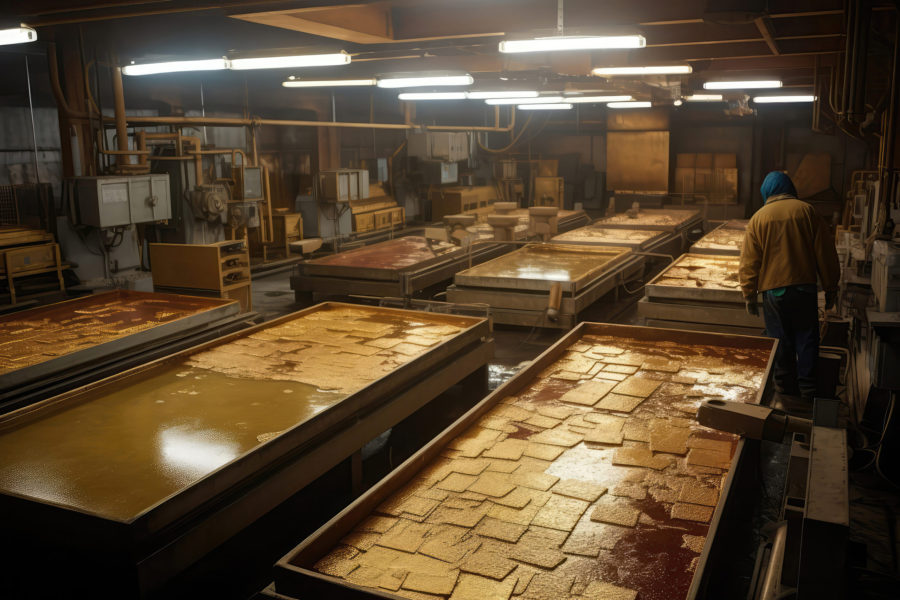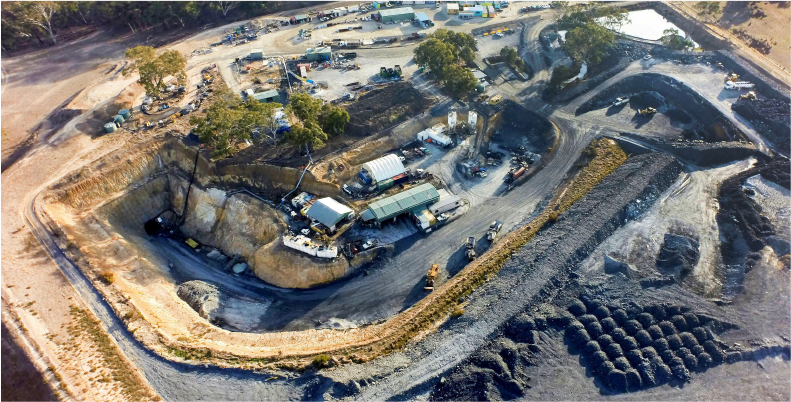The Gold Report: Your recent commodity price research shows a gold price of around $1,811/ounce (oz) for 2013. Could you talk with us about how some of the macroeconomic issues influence that forecast?
Ian Preston: When we look at gold, we don’t have in mind a specific supply/demand balance going forward. It’s easy enough to see the supply side. In trying to forecast a price for gold, we tend to run out a 4% per annum contango from the current gold price until we think U.S. interest rate policy will reverse and rates will start to climb. That stage just keeps on moving out—as it has with Quantitative Easing (QE) 3.
“If accommodative fiscal policies continue globally, gold could go significantly higher.”
We look at the gold price to forecast earnings, and over the next 6 to 12 months, we’d expect $1,650/oz at the lower end and, if it breaks through, $1,850–1,900/oz at the upper end. If accommodative fiscal policies continue globally, it could go significantly higher. But bear in mind that as equity analysts we’re trying to forecast earnings, and to do so we want to be as close as possible to where the gold price will be for the next three to six months, even if the range is quite broad.
TGR: And in your world, it’s better to be conservative than hyperbolic.
IP: It doesn’t do our investors any good if we use a $2,000/oz gold price for the next six months and it ends up averaging $1,780/oz. It’s more meaningful to say we have a positive view around gold. And we do. Considering such accommodative fiscal regimes, very low interest rates globally and central banks buying gold where previously they have been sellers, it’s pretty difficult to take a negative view on the gold price over the next 12 to 18 months.
TGR: Many analysts at the Denver Gold Forum last month echoed that sentiment. They don’t see any catalyst that would push the gold price down appreciably. Let’s talk about gold equities and exchange-traded funds (ETFs) in the context of the backdrop you described.
IP: From a risk diversification point of view, the ETF clearly gives investors exposure to gold. So the gold majors aren’t competing with each other for investors; their competition is the gold ETF. Over a 10-year timeframe, the correlation between gold equities and the gold price is very strong, but more recently—say the last 12 months—gold equities, certainly for the majors, have underperformed the gold price. That’s partly due to the fact that, certainly among the majors, earnings per share (EPS) hasn’t reflected the leverage to an improving gold price.
TGR: Underperformance relative to the gold price actually goes across the board, not just the gold majors. In fact, it’s magnified in the juniors and the smaller companies. Just to clarify your point, though, what are some of the majors you’re talking about?
IP: We’d put Newcrest Mining Ltd. (NM:TSX; NCM:ASX) in there with the likes of Barrick Gold Corp. (ABX:TSX; ABX:NYSE), Goldcorp Inc. (G:TSX; GG:NYSE), Newmont Mining Corp. (NEM:NYSE), etc.
TGR: In the environment you described earlier—QE, European sovereign debt issues, central bank buying and so on—what can these companies do to make a more compelling case for themselves with investors?
IP: First, they must deliver on whatever guidance they’ve given the market. That’s an imperative to have investor confidence. They also must maintain long-life reserves and be able to replace them on an annual basis to keep a perpetual gold production chain going. That’s what the gold ETFs give investors.
TGR: But gold ETFs have grown dramatically over the past five to seven years. What’s given them such an edge?
IP: An ETF costs investors a small amount to hold but carries no risk as compared to a gold equity that comes with operational risk, acquisition risk and potentially political risk. On the other hand, ETFs cannot pay dividends, so meaningful shareholder returns that offset a lot of the operational risks inherent in the gold equities could bring back some of the investors who have gone to ETFs.
“Gold seniors are aware that the return to shareholders is among the key criteria.”
I think the gold seniors are aware that the return to shareholders is among the key criteria. All of them were talking about it in Denver. Whether the return takes the form of a payout ratio or a percentage of the payout ratio or free cash flow or is tied to the gold price, the majors got the message loud and clear that they have to do more than rely on the gold price to see share price appreciation and shareholder returns.
To be more attractive to investors than the ETF, the gold seniors also must grow EPS. Increasing volume when gold prices increase accelerates EPS growth, but volume growth must drive EPS growth—not simply higher gold prices. With volume-driven EPS growth, improving gold prices also give investors more leverage to gold than they would have in an ETF. And I think perhaps we’re starting to see recovery in the gold equities. But it all starts out with meeting the guidance they give the market.
TGR: Of the companies that you cover, tell us about those you feel will do that.
IP: In our markets, you’d have to start with Newcrest Mining, the fourth largest gold company by market cap globally. Its resource and reserve base put this company in a league of its own. It has longer-life assets than any other major, and its four largest operations each produce more than 400,000 oz gold per annum. But despite that very good starting base, the company unfortunately has not had a good track record recently of meeting production guidance, nor shown EPS growth.
That said, it somewhat depends on the timeframe, but if you’re looking forward 20 years, this company will be around for that long and potentially could grow through that whole period from the asset base that they already have, let alone any new assets it finds. Newcrest has been extremely successful in adding resource and reserves to its portfolio.
The next biggest after Newcrest in our market is Regis Resources Ltd. (RRL:ASX), which is not well known in North America. The management team that bought into this company changed the board, delivered one mine already in Western Australia and is well on the way to delivering a second. It has driven quite significant volume growth in a very short space of time. Its share price performance certainly has been very strong over the last three years and is likely to continue growing provided Regis keeps meeting its targets.
TGR: How many producing mines does Regis have?
IP: Two at the moment. Moolart Well was the first mine Regis developed and it’s been in operation just over a year. Garden Well, the second, just commenced production. That means tremendous volume growth with no EPS dilution.
TGR: Does Regis have any other assets?
IP: It recently bought a third project, a joint venture between Newmont’s Australian subsidiary and Alkane Resources Ltd. (ALK:ASX), a small Australian-listed company. With this new project, called McPhillamys, Regis will soon be producing 400,000-plus ounces. Two years ago they weren’t in production at all. Now, that’s attractive to investors.
TGR: Very attractive.
IP: And in terms of cash flow, Regis certainly will be in a position to become a dividend payer. That’s also an attractive element for a mid-tier producer.
TGR: Do most of the companies you cover have North American listings or are most of them exclusively listed in Australia?
IP: I only cover the ASX-listed companies, although some—for example, OceanaGold Corp. (OGC:TSX; OGC:ASX), Perseus Mining Ltd. (PRU:TSX; PRU:ASX), Alacer Gold Corp. (ASR:TSX: AQG:ASX) and Teranga Gold Corp. (TGZ:TSX; TGZ:ASX)—have Canadian listings as well, and Newcrest is now listed on the TSX.
TGR: Oceana’s growth profile has been an impressive one, similar to what you described with Regis.
IP: And Oceana’s at the point now where it’s about to commission the Didipio project in the Philippines. That’s a very big leg of growth—a company-changing asset. My colleague just returned from a site visit, and Oceana will be commissioning in this current quarter.
“Investors have to focus on the companies that can grow volumes without actually issuing fresh equity.”
Going from mining low-grade refractory ore underground in New Zealand, which is where Oceana’s current operations are, to an open-pit copper-gold project in the Philippines will dramatically change its cash generation, and it’s on the cusp of production as we speak.
The market has been skeptical about delivery because that project has been around for a very long time and was supposedly going to be developed a number of times over the years. Under these circumstances, you’d expect the market to be looking at Oceana as a re-rating opportunity.
TGR: This Philippine asset is a game changer for Oceana. Do you see the Philippines more as an emerging gold district than in the past?
IP: There’s no question that the Philippines has the resource base that might have hosted a lot more development over the last five or six years. Given the resource endowment and a quite skilled labor force, you would have expected the Philippines to have participated more in the resource boom.
It’s really starting to come to the fore now, though, because mining companies have to go where the deposits are. I think activity will increase in the Philippines as some of the global majors get involved there. Xstrata Plc (XTA:LSE) has a controlling stake in the Tampakan project. In March, Gold Fields Ltd. (GFI:NYSE) from South Africa exercised an option to take a 40% stake in Far Southeast in the Philippines, and soon afterward announced an option to acquire 100% of the Guinaoang deposit. There are some major nickel operations in the Philippines too.
TGR: In another fairly major acquisition, B2Gold Corp. (BTO:TSX; BGLPF:OTCQX) bought CGA Mining Ltd. (CGA:TSX; CGX:ASX), which has an asset in the Philippines, the Masbate gold project. So it looks as if quite a bit is bubbling in the Philippines.
IP: And the government has done a lot of work in clarifying the legal issues surrounding ownership rights. Once miners are comfortable with that, you’re on the road to more significant development. The smaller companies usually start moving in first because they’re a bit more nimble. Then the midtiers and the seniors follow. Once the whole spectrum is involved, you really start to see quite significant development.
TGR: Speaking of spectrums, let’s move to another sector in the resource arena and another company you cover—Lynas Corporation Ltd. (LYC:ASX). With North American interest in rare earths and specialty metals magnified over the last few years, we’ve been watching Lynas’s story in Malaysia unfold.
IP: Lynas has gone through everything necessary to be able to operate the Lynas Advanced Materials Plant in Malaysia, the so-called LAMP facility but one final challenge remains. It’s a legal challenge brought by parties who oppose the operation of that facility in Malaysia. Under no circumstances do they want it to operate. Of course, it’s always difficult to make a call on legal proceedings.
Everything Lynas has done in terms of the development has been within in the Malaysian guidelines for a project of that nature and also within the International Atomic Energy Agency (IAEA) guidelines. I don’t think anyone would say that Lynas has cut corners, that it hasn’t disclosed environmental information or that it hasn’t adhered to best practices globally. From that perspective, the company has gone as far as it can.
If the court rules in Lynas’ favor, the company will be able to start importing the concentrate from the facility in Australia and actually start producing the rare earths as early as December as the final court ruling is due Nov. 7. It’s that close. But at the moment, investors are waiting to see a product actually being produced from the plant.
TGR: So Lynas is facing the final hurdle in the race, and we’ll be waiting with bated breath. Do you have any suggestions for our readers on the investment environment going forward?
IP: We certainly sit in the camp that believes the commodity boom is not over in the sense that volume growth will continue. Still, we’ve probably seen the best of most metal prices already and each of the metals will react differently over the next few years. For example, in iron ore, we expect the seaborne-trade market to be in oversupply probably in two or three years’ time. Copper, in contrast, could well have upside remaining because China’s demand will grow. Even though its growth rate has declined, it’s off that much larger base, so, volume growth for copper is still very much intact—and the same goes for seaborne-traded iron ore.
From an equity investor’s perspective, with a few exceptions the easy part of earnings going up because prices were going up is pretty well behind us now. But we’ll still see earnings growth driven by those companies that can grow volumes.
TGR: That suggests that investors have to be pickier.
IP: Absolutely. You have to be much more focused on, first, the commodity. Clearly, we think gold still has a very favorable outlook. Then you have to focus on the companies that can grow volumes without actually issuing fresh equity.
TGR: And volume growth without blowing out your per-ounce cost structure.
IP: Absolutely. But cynical clients would say, “Yes, everybody is talking the talk. We need to see them walk the walk now.”
TGR: Well put, Ian. Thank you so much for your time and your thoughts.
Ian Preston is a resources analyst for Goldman Sachs’ Global Investment Research in Australia and New Zealand. In 2000, he joined JBWere, a private wealth management firm that in 2003 partnered with the Goldman Sachs Group Inc., as a research analyst covering the gold sector. Mid-cap base metal companies came under his coverage umbrella later in 2000, and Preston assumed responsibility for emerging small- and mid-cap mining companies in 2004. He was named managing director in 2010.
Prior to 2000, Preston was a resource specialist, working on both buy and sell sides of the financial services industry in Johannesburg and Brisbane. Following graduate school, he spent four years analyzing and implementing new mining projects in diverse metals, and earlier in his career, he spent six years working for copper and gold mining companies in operational and management capacities.
Preston earned a degree in mining engineering from the University of the Witwatersrand in Johannesburg in 1974 and a Master of Business Administration from the University of Cape Town in 1980. He is a registered professional engineer in South Africa and an accredited member of the Securities and Derivatives Industry Association.
Want to read more exclusive Gold Report interviews like this? Sign up for our free e-newsletter, and you’ll learn when new articles have been published. To see a list of recent interviews with industry analysts and commentators, visit our Exclusive Interviews page.
DISCLOSURE:
1) Sally Lowder of The Gold Report conducted this interview. She personally and/or her family own shares of the following companies mentioned in this interview: None.
2) The following companies mentioned in the interview are sponsors of The Gold Report: Goldcorp Inc. and B2Gold Corp. Streetwise Reports does not accept stock in exchange for services. Interviews are edited for clarity.
3) Ian Preston: I personally and/or my family own shares of the following companies mentioned in this interview: Newcrest Mining Ltd. I personally and/or my family am paid by the following companies mentioned in this interview: None. I was not paid by Streetwise Reports for participating in this interview.




